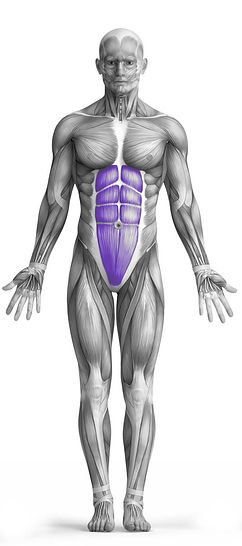Dumbbell Side Bend 101 Video Tutorial
0

Exercise Synopsis
Target Muscle Group
Abs
Secondary Targets
Execution
Isolation
Force Type
Pull
Required Equipment
Dumbbell
Fitness Level
Intermediate
Variations
None
Alternatives
Timer
Hour
Minute
Second
Stopwatch
00:00:00:00
Overview
The Dumbbell Side Bend is an effective exercise primarily targeting the abdominal muscles with secondary emphasis on the obliques. This exercise requires the use of a dumbbell for resistance. To perform it, one stands upright while holding a dumbbell in one hand, then leans sideways, bending at the waist to lower the dumbbell towards the knee, before returning to the starting position. The movement engages the core muscles, particularly the obliques, helping to improve lateral stability and strengthen the abdominal region.
How to Perform
This workout focuses on strengthening the oblique muscles, crucial for lateral stability and overall core strength enhancement.
Begin by securing a pair of dumbbells, ensuring they are suitable for your fitness level.
Stand upright, maintaining proper posture, with a dumbbell in each hand and your palms facing inward towards your body.
Plant your feet firmly on the ground, positioning them at shoulder-width apart to provide a stable base for the exercise.
Throughout the movement, prioritize maintaining a straight back and keep your gaze forward to ensure proper form and minimize the risk of injury.
Initiate the exercise by bending your torso to the right side as far as your flexibility allows, while keeping your arms extended and the dumbbells close to your body.
Return to the starting position without pausing, then smoothly transition into bending your torso to the left side, engaging the obliques.
Execute the exercise for the desired number of repetitions, aiming for controlled movements and focusing on engaging the targeted muscle groups effectively.
Remember to breathe steadily throughout the exercise to optimize oxygen flow to your muscles and enhance performance.
As with any workout, it's essential to listen to your body and adjust the intensity and weight of the dumbbells accordingly to suit your fitness level and goals.
★ Bonus: For exercises that involve external weights (such as dumbbells, barbells, or machines), the One Rep Max (1RM) calculator can help you estimate your maximum lifting capacity. Use it to track your strength progress and adjust your training for optimal results.
Tips
Maintain proper alignment throughout the exercise, ensuring your back remains straight, and your gaze is fixed forward. Focus on bending solely at the torso to effectively target the intended muscle groups.
Emphasize the stretch and contraction of the oblique muscles along the side of your body, enhancing both flexibility and strength in this area.
Keep the dumbbells close to your body throughout the movement to maximize engagement of the targeted muscles and promote stability.
For variation, consider performing this exercise while seated on the edge of a bench, which can offer a different angle of resistance and further challenge your core stability.
How Not to Perform
Avoid arching your back excessively during the exercise, as this can strain the lower back and detract from targeting the intended muscles.
Refrain from using momentum to swing the dumbbell downwards, as this diminishes the effectiveness of the exercise and increases the risk of injury.
Do not lean too far to the side beyond your range of motion, as this can place excessive stress on the spine and lead to discomfort or injury.
Ensure that you're not gripping the dumbbell too tightly, as this may cause unnecessary tension in the arms and detract from focusing on the abdominal and oblique muscles.
Avoid holding your breath or breathing irregularly throughout the movement; instead, maintain a steady and controlled breathing pattern to optimize oxygen flow and muscle engagement.
Do not rush through the exercise or perform it with jerky movements; instead, focus on smooth and controlled motions to maximize muscle activation and minimize the risk of strain.
Avoid overarching or rounding your shoulders forward, as this can compromise posture and reduce the effectiveness of the exercise on the targeted muscle groups.
Do not neglect proper warm-up and stretching before performing the exercise, as this helps prepare the muscles for the movement and reduces the risk of injury.
Variations
Variations of fitness exercises refer to different ways of performing a specific exercise or movement to target various muscle groups, intensities, or goals. These variations aim to challenge the body differently, prevent plateaus, and cater to individuals with varying fitness levels.
Alternatives
Alternative exercises in fitness refer to different movements or activities that target similar muscle groups or serve the same training purpose as the primary exercise. These alternative exercises can be used as substitutes when the original exercise is unavailable or challenging to perform due to various reasons such as equipment limitations, injuries, or personal preferences.








